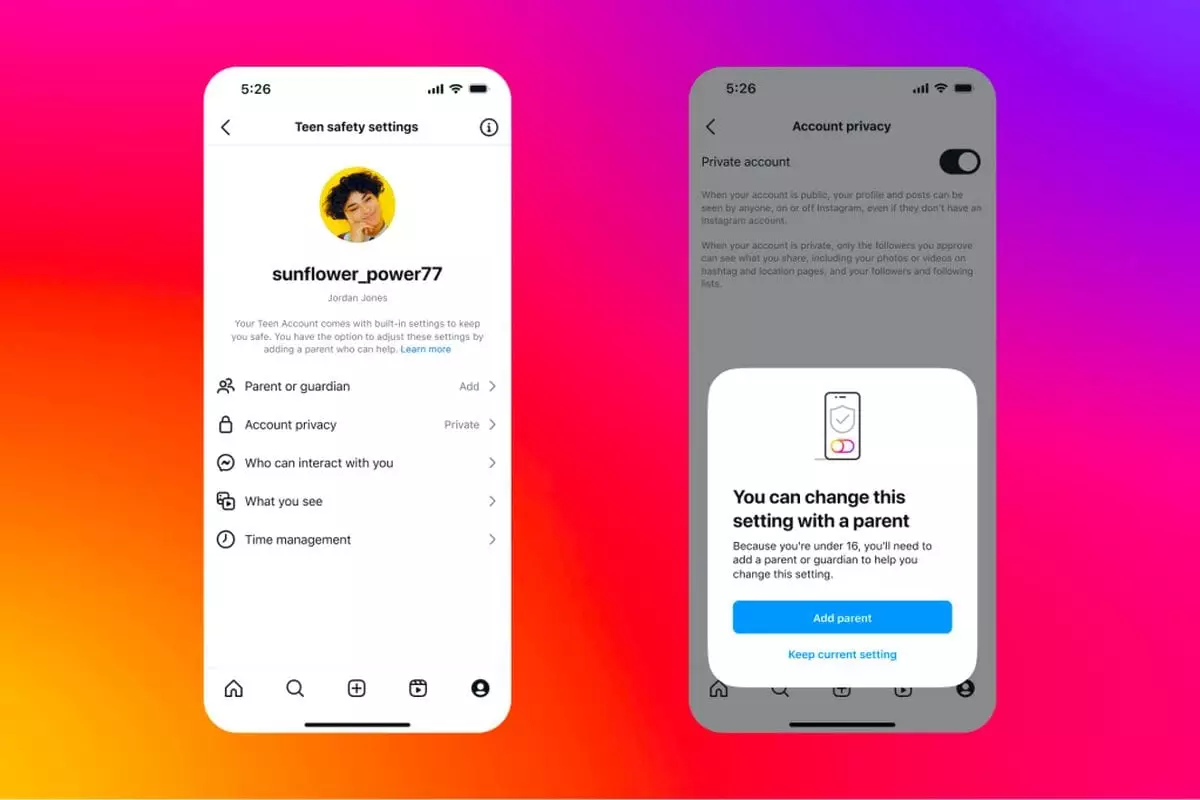Instagram, a prominent player in social media, has recently rolled out its Teen Accounts feature in India, highlighting its determination to foster a safer online environment for younger users. This initiative aligns with a broader commitment from Meta, the parent company, to enhance user safety, specifically targeting the vulnerabilities associated with underage users on the platform. By implementing strict restrictions on accounts owned by individuals under 18, Instagram aims to create a more secure digital experience for teenagers.
One of the cornerstone elements of the Teen Accounts functionality is the requirement for parental consent when changing certain privacy settings. For parents of users aged 16 and above, Instagram has introduced supervisory features that allow them to monitor their children’s activities on the platform. These controls include the ability to view whom their teens have messaged over the past week while maintaining the privacy of the message content. Additionally, parents can enforce daily limits, limiting access based on time or activating Sleep Mode during nighttime hours.
Privacy Measures and Default Settings
Instagram has taken significant steps to protect younger users by setting their accounts to private by default. This measure effectively restricts interactions to approved followers only, substantially minimizing exposure to unsolicited comments or messages from strangers. Users under 16 will have limited capabilities in messaging, ensuring they can only connect with accounts they have intentionally added. Such restrictions are critical, as they address many concerns surrounding online harassment and predatory behavior.
Moreover, Instagram is implementing sophisticated content moderation policies. Offensive words and phrases will be filtered in both comments and direct messages, creating a more supportive environment. There is a notable emphasis on restricting access to potentially harmful content, including graphic violence and cosmetic procedure advertisements, which can negatively impact the self-esteem and mental health of impressionable users. This not only aligns with Instagram’s brand philosophy of fostering positivity but also demonstrates a proactive approach to reducing the potential negative influence of social media.
Another innovative feature includes a prompt for teenagers to take a break after 60 minutes of usage, reinforcing the importance of balanced screen time. This initiative is notable, as it directly addresses growing concerns about the potential mental health effects of excessive social media use among teens. Automatically activating Sleep Mode during evening hours further underscores Instagram’s commitment to promoting healthier habits among its younger users.
To combat the issue of inaccurate age reporting during sign-ups, Instagram is enhancing its age verification methods. By incorporating tools such as ID checks and video selfies, the platform aims to ensure that users are properly categorized based on their actual age. This initiative is crucial, as it not only helps in deploying appropriate safety measures but also preserves the integrity of the platform for its intended audience.
Instagram’s introduction of Teen Accounts in India is a significant move towards creating a secure online environment for young users. By prioritizing parental engagement, privacy, content moderation, and age verification, the platform is taking crucial steps to mitigate risks associated with youth interactions on social media. As the digital landscape continues to evolve, such initiatives will play an essential role in safeguarding the wellbeing of younger generations navigating these virtual spaces.

